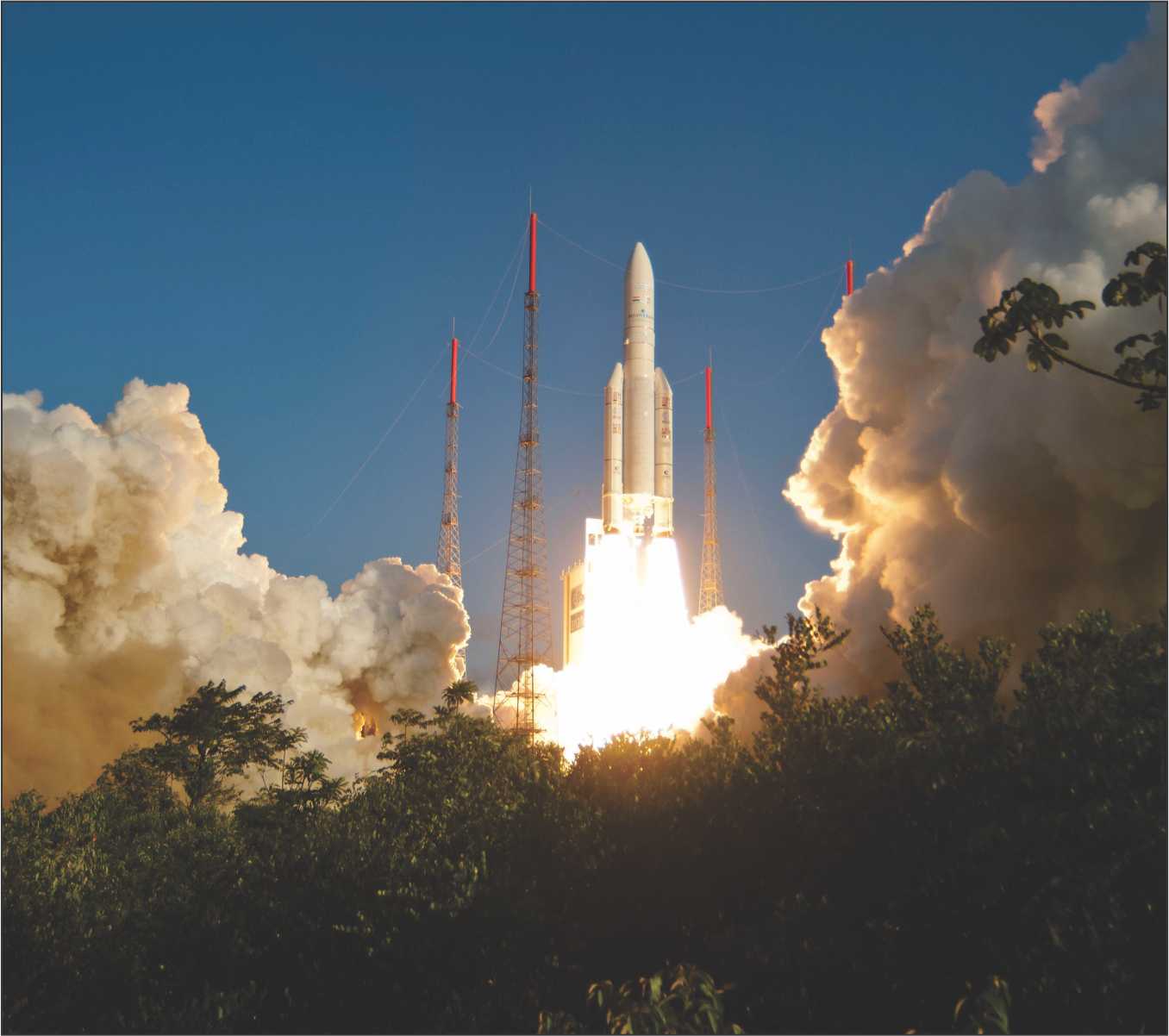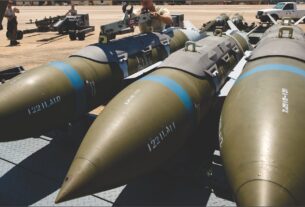In so far as the acquisition of state of the art and well equipped communication systems is concerned, the Indian Army appears to be a laggard in comparison to the two other services.
For instance, the sturdy and versatile fibre optic based Air Force Network (AFNET) introduced by the Indian Air Force (IAF) would serve as a reliable platform on which air control and command systems would be developed to facilitate the link up of command bases, radars, missile batteries, air borne fighters and other resources.
The AFNET, which was put in place as a substitute for the highly obsolete tropo-scatter communications system, is based on most upto date data transfer technology in the form of IP packets over the network using Multi Protocol Label Switching (MPLS). As it is, under AFNET all leading formations and static facilities would be linked up through WAN (Wide Area Network) and as such would be accessible via data communications channels. More importantly, AFNET will be allowed to access a slew of transponders on board INSAT/GSAT spacecraft constellation being operated by the Indian Space Research Organisation (ISRO).
INSAT/GSAT is considered one of the largest communications satellite constellations in the world. What is more, IAF could now look forward to getting its own exclusive communications satellite.
With the successful flight of India’s three stage Geosynchronous Satellite Launch Vehicle (GSLV) equipped with a home grown upper cryogenic engine stage has cleared the decks for the launch of GSAT-7A advanced communications satellite for the exclusive use of the IAF. If everything goes as planned, GSAT-7A would be launched during 2014-15 by means of the 414-tonne GSLV from the Satish Dhawan Space Centre (SDSC) in Sriharikota island on India’s eastern coast .GSAT-7A is a follow on to the GSAT-7 satellite launched in August last year as India’s first dedicated defence satellite meant for the exclusive use of the Indian Navy.
Exclusive satellite
Indian Navy, the youngest and most tech savvy among the three Indian services, seems to have stolen a march over the Indian Army and IAF in terms of boosting its communications infrastructure with the acquisition of GSAT-7.
The multi-band GSAT-7 satellite, positioned in geostationary orbit overlooking the strategically situated Indian Ocean, will help transform the entire maritime domain awareness of the Indian Navy. For the satellite is capable of providing more than 1,000 nautical miles footprint over the Indian Ocean region. What’s more, the Indian Navy would be in a position to effectively link up its resources spread across the oceanic waters and land bases through a central facility by making use of the GSAT-7 potentials.
Clearly and apparently, the secure and reliable communication links provided by GSAT-7 will help the Indian Navy get a digital tactical battlefield view of the dispersed fleet formations, aircraft locations and even submarines moving stealthily in the depths of the oceans. The synergy between combat platforms moving in the high seas of the world with the land based nodes through GSAT-7 capability would help bring about a revolutionary transformation in the long term operational strategy of the Indian navy.
Of course, like Indian Navy and IAF, Indian Army is also quite keen on acquiring its own exclusive satellite capability. In this context, not long back V K Saraswat, the former head of the Defence Research and Development Organisation (DRDO) had revealed that a well conceived plan for equipping all the three wings of services with a range of satellites is in place.
As part of this vision, the Hyderabad based Defence Electronics Research Laboratory (DLRL), which functions under DRDO, would be developing a high performance electronics intelligence satellite that would help the Indian armed forces enhance their surveillance and reconnaissance capabilities by picking up electronics communications especially along the international borders.
This satellite which will be launched by means of the four stage space workhorse PSLV (Polar Satellite Launch Vehicle) into a low earth orbit by the middle of this decade would feature an active microwave sensor in the form of a Synthetic Aperture Radar (SAR).
The 15 year Technology Perspective and Capability Roadmap of the Indian defence establishment envisages the creation of a network of small satellites for the exclusive use of Indian defence forces. DRDO would develop these satellites jointly with ISRO.
Inadequate technology
Of course, Indian Army is now in a position to access the transponder capability of the GSAT/INSAT spacecraft constellation for meeting a part of its communications requirements. In the context of the growing challenges the Indian Army would face in the years ahead, it would need to operate a range of exclusive satellites to meet its tactical and strategic goals in an effective and efficient manner.
As it is, the massive intelligence failure suffered by the Indian defence forces before and during the short-lived 1999 Kargil skirmish with Pakistan was attributed to the lack of access to satellite resources. Indian Army has left none in doubt that it is keen on acquiring a dedicated constellation of satellites for a variety of applications including communication, navigation, surveillance, reconnaissance and weather watch.
For during the Kargil conflict fought in the treacherous and difficult to access Himalayan heights, the older generation communications equipment in service with the Indian Army had proved inadequate to the task with the signal attenuation posing a serious problem.
This highlights the need for the Indian Army to access the capability of high powered S-band communications satellite GSAT-6 being designed and developed by ISRO and planned for launch during 2014-15. This satellite meant to demonstrate the contours of the futuristic mobile satellite communications should be of immense interest to the Indian Army. For this satellite would serve as a space platform for developing the technologies of high fidelity communications with handheld terminals even while substantially enhancing the network management techniques.
Perhaps by making use of the inputs provided by the operations of GSAT-6, Indian Army could go in for an advanced satellite system designed to support mobile communication under the stringent and rigorous field conditions.
Of course, along with two other services the Indian Army can access the capability of India’s first home grown navigation satellite IRNSS-1A launched in last July for location identification and navigational support. In fact, IRNSS-1A capability would have helped Indian armed forces avoid some of the “blunders” committed during the Kargil war.
Communication infrastructure
All said and done the network connectivity and mobile communications infrastructure of the Indian Army leaves much to be desired. In particular, this deficiency could come in the way of Indian Army’s plan for bolstering the prospects of network centric warfare. For the much touted and widely discussed plan for the battlefield Tactical Communication System (TCS) conceived way back in 2000 with a view to replace the rapidly aging and obsolete mobile communications system in service with the Indian Army is yet to become a reality.
In fact, it was originally scheduled to be implemented way back in 2009. But as is the case with most of the defence projects, TCS too became a victim of indifference, delay and bureaucratic apathy. In fact, the Indian Army did badly require such a device based on mobile, sturdy, survivable and reconfigurable architecture that would afford protection against electronic warfare. As to when a fully operational TCS at the command of the Indian Army would be in place and become operational, no one is sure as yet.
Even as the TCS is yet assume a practical shape, the idea of tri service Defence Communications Network (DCN) is being vigorously projected. Since the modern battlefield scenario highlights the need for an efficient and integrated use of resources cutting across the service boundaries, the idea of a tri service DCN is worth pursuing.
As envisaged now, the DCN architecture would be a versatile system based on optical fibre cable, satellites, earth stations and transportable and mobile hand held terminals. As such an effective and rapid swap of data between the services could lead to a successful battlefield strategy.
The TCS project, whose worth could exceed US$2-billion and which is planned to be realized indigenously, would replace the obsolete Army Radio Engineered Network (AREN).
The state owned defence major Bharat Electronics Limited (BEL) will join the race for prototype development with a Special Purpose Vehicle (SPV) made up by private sector companies including L&T, Tata Power SED and HCL Info Systems Limited.
It is the first ever program where in the three major private sector companies have joined forces to float a consortium meant to generate expertise and solution for the implementation of strategically important TCS. Of course, there is a clarity that the TCS project would be realized under “Buy India, Make India” clause forming part of the Defence Procurement Procedure (DPP).
As part of this approach, the Government will pay 80% of the total developmental cost while 20% will be borne by the participating industries. For TCS, the selected partners are required to make available prototype systems for testing and validation. As things stand now, the finally selected bidder would be required to implement the project meeting the stringent requirements of the Indian armed forces.
Battlefield experts point out that TCS is vital for the operational preparedness and combat readiness of the Indian armed forces. There is no denying the fact that a versatile, reliable, secure and sturdy communications network capable of functioning even undress extremes of atmospheric and environmental conditions could play a key role in terms of realizing both the strategic goals and tactical objectives in an efficient and integrated manner.
Vastly enhanced and real time access to satellite capability could improve the operational potentials of TCS manifold. Because satellites are immune to geographical barriers and environmental and climatic disturbances they can easily be harnessed to sustain the quality of mobile communications in areas where the ground based signals find it difficult to reach.
TCS is designed to give army the means to “communicate on the move” even as it penetrates into enemy territory. Based on the lightweight, high mobility vehicles that carry communications nodes, TCS will boast of sufficient bandwidth to handle very high data rates and provide encrypted voice, video and data transmission through frequency hopping radio networks with multiple redundancies. Naturally, this network will also have the mobile terminals necessary for the satellite based connectivity as well as the firewalls necessary to obviate cyber intrusion.
TCS is designed to ensure safer and reliable communications network to support defence forces in a battle zone. TCS will accommodate the future war fighting concepts that encompasses mobility, fast paced manoeuvres and rapid dispersion, exchange of information and speedier target acquisition. A sturdy information grid constitutes the mainstay of network centric warfare. For, it helps in receiving, processing, transmitting and storing vital information that could be shared by combatants on a real time basis.
Moreover the networked sensors create engagement quality awareness. Further, the networked sensors allow the shooters to have a common operational picture for the easy targeting.
NCW
In the network centric warfare, advanced information systems could boost force element interaction level never experienced before. Air, sea, land, space and cyber warfare components can be integrated to work as a single operational entity. The network centric approach can also improve affordability by enabling the sharing of information amongst various components of the system. In the context of cyber space along with the outer space emerging as a new domain of the ancient art of warfare, a network centric warfare strategy should also take into account the needs of ensuring the security of communications networks.
With a fast growing dependence on information networks assuming importance in the outcome of a war, cyber attacks directed towards a network could seriously compromise the net-centric capability.
In the context of the growing cyber intrusion, India should put in place a full fledged cyber command to prevent hacking of information and communications networks. A robust network of satellites holds the key to the adroit exploitation of network centric capability to realize strategic goals in both short lived conflagration and long drawn out battles.
Meanwhile, the Indian Army is planning to transform its backbone network named Army Static Switched Communication Network (ASCON) which was essentially put in place to bring into a common grid, the telecommunications infrastructure of the hinterland with its tactical communications network.
This sturdy communications network is being augmented and upgraded to help the Indian aArmy to boost its tactical communications capability. This digital, highly reliable and secure communications network also facilitates a rapid data transfer facility to the Indian defence forces.
A pan India communications backbone network that India’s state owned Bharat Sanchar Nigam Limited (BSNL) is developing and implementing for the use of Indian Army will provide quick and reliable linkages to 129 army, 162 air force and 33 naval stations. This network based on 60,000-km long optical fibre connectivity will be under the control of the Indian Army. It a quid pro quo for the commercial mobile spectrum vacated by the defence forces.
In the backdrop of the Indian armed forces facing the possibility of engaging in battle on multiple fronts, the need for a reliable and comprehensive communications system including TCS has become all the more pronounced.
For quick and reliable communication the rapid mobility holds the key to the winning battlefield strategy. In the quest to stay at the winning edge of war, the Indian Army should look at all the technological options meant to turn its communications infrastructure into a system that is fully responsive to the changing needs and challenging requirements of the modern day battlefield.





